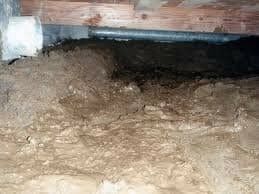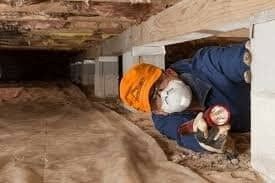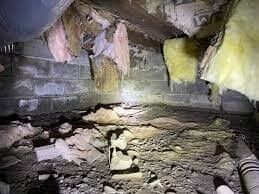
Drying out Crawl Space Soil: A Comprehensive Guide
The crawl space under your home is an essential part of its foundation structure. It provides access to electrical and plumbing systems, and also helps to maintain the overall integrity of your home. However, crawl spaces are also susceptible to water damage, which can lead to high humidity levels and moisture issues.
One common problem in crawl spaces is damp or wet soil. This can occur due to various reasons such as poor drainage, foundation cracks, plumbing leaks, or excessive moisture infiltration. Damp soil in crawl spaces can lead to mold growth, structural damage, and even health issues. Therefore, it’s crucial to dry out the crawl space soil and prevent future moisture problems.

Why is it important to dry out crawl space soil?
Drying out crawl space soil is essential to maintain a healthy and safe living environment. Here are some reasons why it’s important:
- Preventing mold and mildew growth: Damp soil creates a favorable environment for mold and mildew to thrive. Mold spores can easily spread throughout your home, leading to respiratory issues, allergies, and other health problems.
- Avoiding structural damage: Excessive moisture in the soil can weaken the foundation and structural components of your home. Over time, it can lead to foundation cracks, sagging floors, and other costly repairs.
- Improving indoor air quality: Moisture in the crawl space soil can contribute to poor indoor air quality. It can release musty odors and airborne contaminants, which can affect the health and comfort of your family.
- Preventing pest infestations: Damp crawl space soil attracts pests like termites, ants, rodents, and insects. These pests can cause damage to your home’s structure and pose health risks.
How to dry out crawl space soil?
Drying out crawl space soil requires a systematic approach to remove excess moisture and prevent future moisture issues. Here are the steps involved in the process:

1. Identify the source of moisture:
The first step is to identify and address the source of moisture in your crawl space. It could be a leaking pipe, poor drainage, groundwater seepage, or inadequate vapor barrier. Fixing these issues will prevent further water intrusion into the crawl space.
2. Remove standing water:
If your crawl space has standing water, it needs to be removed before starting the drying process. Use a pump or a wet/dry vacuum to remove the water. Ensure proper disposal of the water to prevent recontamination.
3. Increase ventilation:
Improving the ventilation in your crawl space is crucial for drying out the soil. Install vents or fans to increase air circulation and facilitate moisture evaporation. You can also use dehumidifiers to control the humidity levels in the space.
4. Install a vapor barrier:
A vapor barrier is an essential component of crawl space encapsulation. It helps to prevent moisture from entering the space and protects the soil from excessive moisture. Install a high-quality vapor barrier on the crawl space floor and walls.
5. Insulate the crawl space:
Insulating the crawl space helps to maintain a consistent temperature and reduce humidity levels. It also prevents condensation and heat transfer between the crawl space and the living areas of your home. Use appropriate insulation materials and techniques for your specific climate.
6. Regular maintenance and monitoring:
Once you have dried out the crawl space soil, it’s essential to maintain and monitor its condition regularly. Check for signs of moisture, leaks, or mold growth. Keep the crawl space clean and free from debris that can trap moisture.
Tips for drying out crawl space soil effectively
To ensure effective drying of crawl space soil, follow these additional tips:
- Address drainage issues: Ensure that your home’s exterior has proper grading and functioning gutters and downspouts to redirect water away from the foundation.
- Seal foundation cracks: Inspect the foundation for any cracks or gaps and seal them to prevent water intrusion.
- Manage landscaping: Avoid excess watering or planting vegetation too close to your home’s foundation, as it can contribute to moisture issues in the crawl space.
- Consider professional help: If you’re unsure about the proper drying techniques or if the moisture problem is severe, it’s recommended to seek professional help from water damage restoration experts.
Drying out crawl space soil is a crucial step in maintaining a healthy home environment and preventing damage to your property. By following the proper techniques and taking preventive measures, you can ensure a dry and structurally sound crawl space.



